Haiti After the Earthquake (36 page)
Read Haiti After the Earthquake Online
Authors: Paul Farmer

The militarization of aid is an equally complex topic. “Consider how,” Gourevitch continues, “in Ethiopia and Somalia during the nineteen-eighties and nineties, politically instigated, localized famines attracted the food aid that allowed governments to feed their own armies while they either destroyed or displaced targeted population groups.”
56
Since 1995, Haiti has had no army. Its dissolution was not mourned by many: as the citizenry and historians know, the modern Haitian army was created during the U.S. occupation by an act of Congress. It never faced a non-Haitian enemy. Dissolving it as a body did not remove the army as a political risk, however, as was clear in the years leading up to 2004, when the elected government was dislodged by a violent process still willfully misunderstood in spite of abundant proof that weapons and other material were supplied to former soldiers massed on the Dominican border.
57
Among the effects of the 2004 coup was, predictably enough, the further weakening of the public sector.
56
Since 1995, Haiti has had no army. Its dissolution was not mourned by many: as the citizenry and historians know, the modern Haitian army was created during the U.S. occupation by an act of Congress. It never faced a non-Haitian enemy. Dissolving it as a body did not remove the army as a political risk, however, as was clear in the years leading up to 2004, when the elected government was dislodged by a violent process still willfully misunderstood in spite of abundant proof that weapons and other material were supplied to former soldiers massed on the Dominican border.
57
Among the effects of the 2004 coup was, predictably enough, the further weakening of the public sector.
But few of those working in Haiti after the quake mistake these struggles over the control of the state apparatus with the logistic help provided by the U.S. military and others, a topic discussed in this book by Louise Ivers and others. When we start conflating the help offered by the USNS
Comfort
with struggles to topple sovereign governments, we have lost the gift of discernment.
Comfort
with struggles to topple sovereign governments, we have lost the gift of discernment.
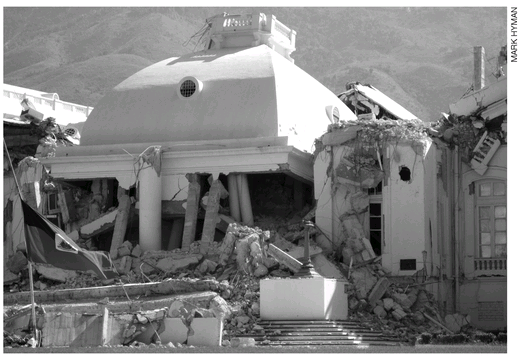
The century-old National Palace, destroyed in the earthquake (as was almost all other federal infrastructure)
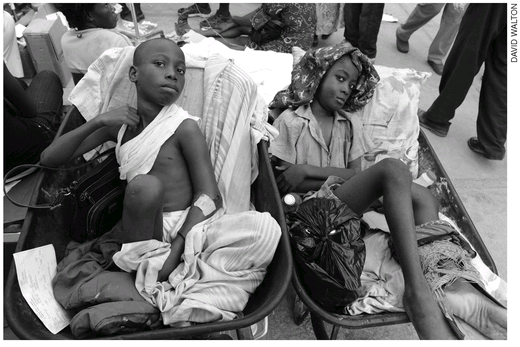
Injured boys in wheelbarrows at the General Hospital
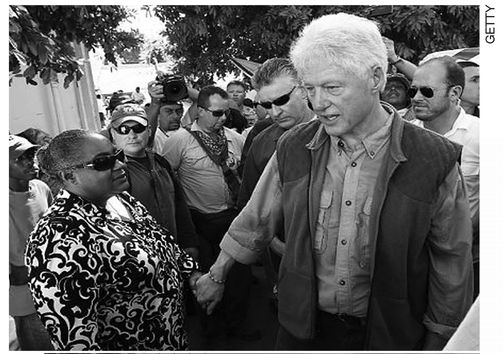
President Clinton and Nancy Dorsinville at the General Hospital, January 2010
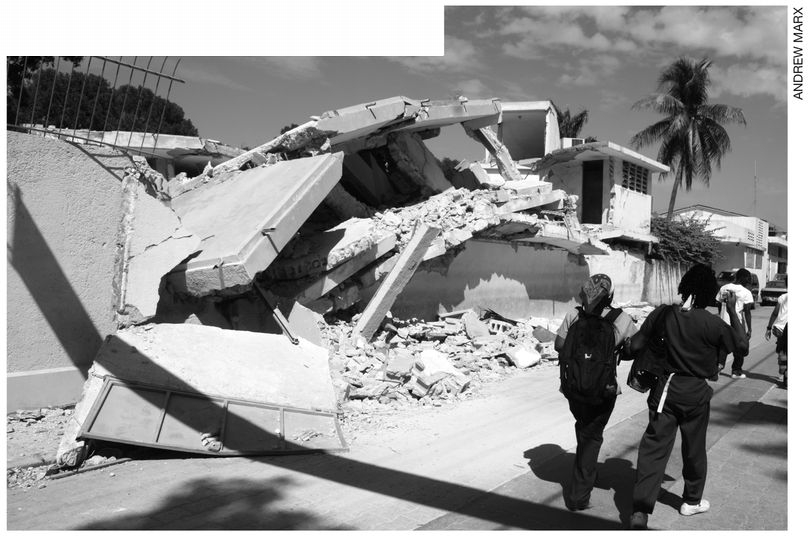
The nursing school in Port-au-Prince
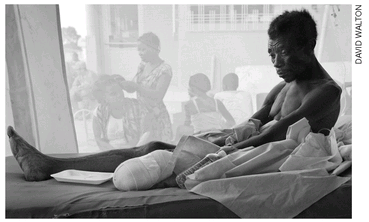
Injured man in tent clinic outside the General Hospital
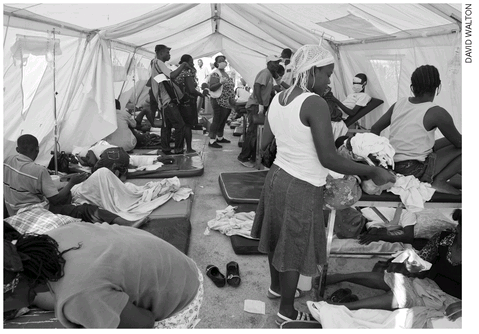
Tent clinic outside the General Hospital, five days after quake
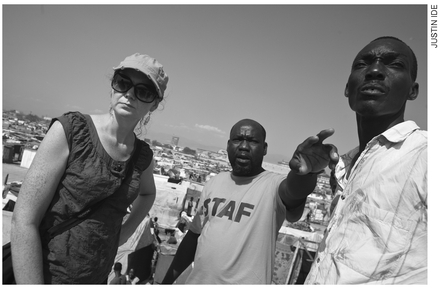
Dr. Louise Ivers at Parc Jean-Marie Vincent
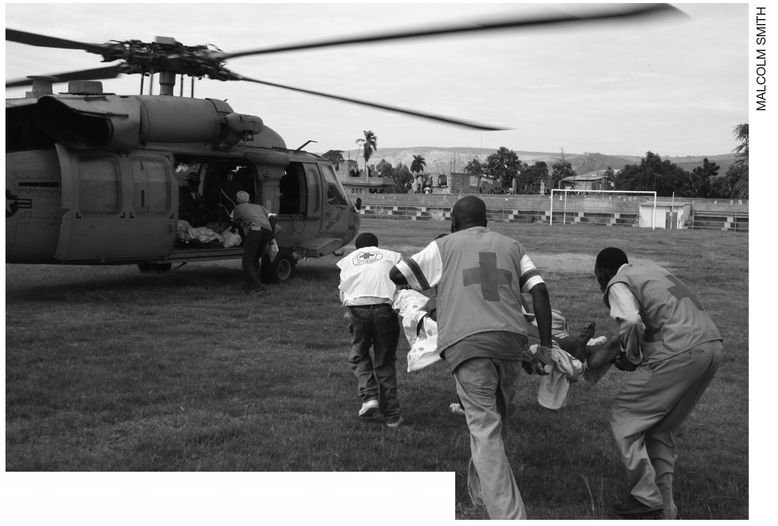
Patient being evacuated from Saint-Marc to the USNS
Comfort
Comfort
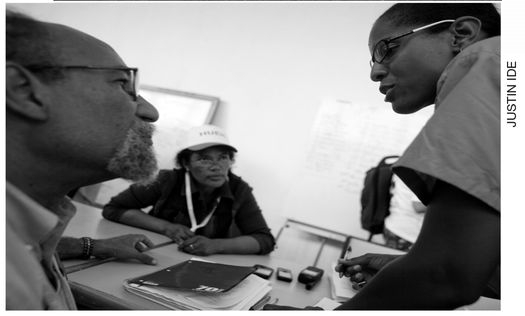
Dr. Alix Lassègue, Director, and Marlaine Thompson, Chief of Nursing, with Harvard medical resident, Dr. Natasha Archer, at the General Hospital
BELOW: The USNS
Comfort,
the U.S. Navy floating hospital, steamed into Haitian waters on day 8 after the earthquake
Comfort,
the U.S. Navy floating hospital, steamed into Haitian waters on day 8 after the earthquake
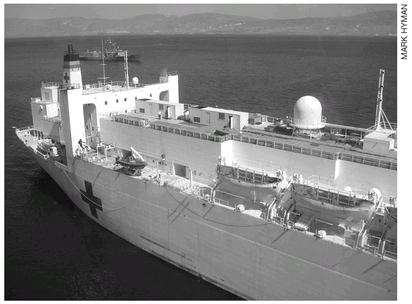
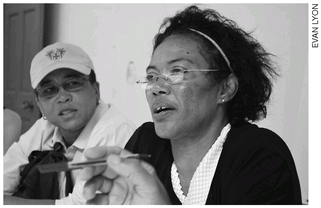
Marlaine Thompson, Chief of Nursing at the General Hospital, with Loune Viaud, Director of Strategic Planning and Operations for Zanmi Lasante
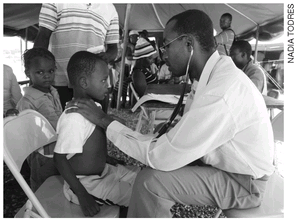
Other books
Like Sweet Potato Pie by Spinola, Jennifer Rogers
The Highlander's Servant: Book One of the Highlander Possession Series by Savannah Vining
The Lies You Tell by Jamila Allen
FOREWORD by Dean
The Gold Falcon by Katharine Kerr
Mission: Earth "Disaster" by Ron L. Hubbard
Sybrina by Amy Rachiele
Taming Hollywood’s Ultimate Playboy by Amalie Berlin
Family (Reachers) by Fitzpatrick, L E
